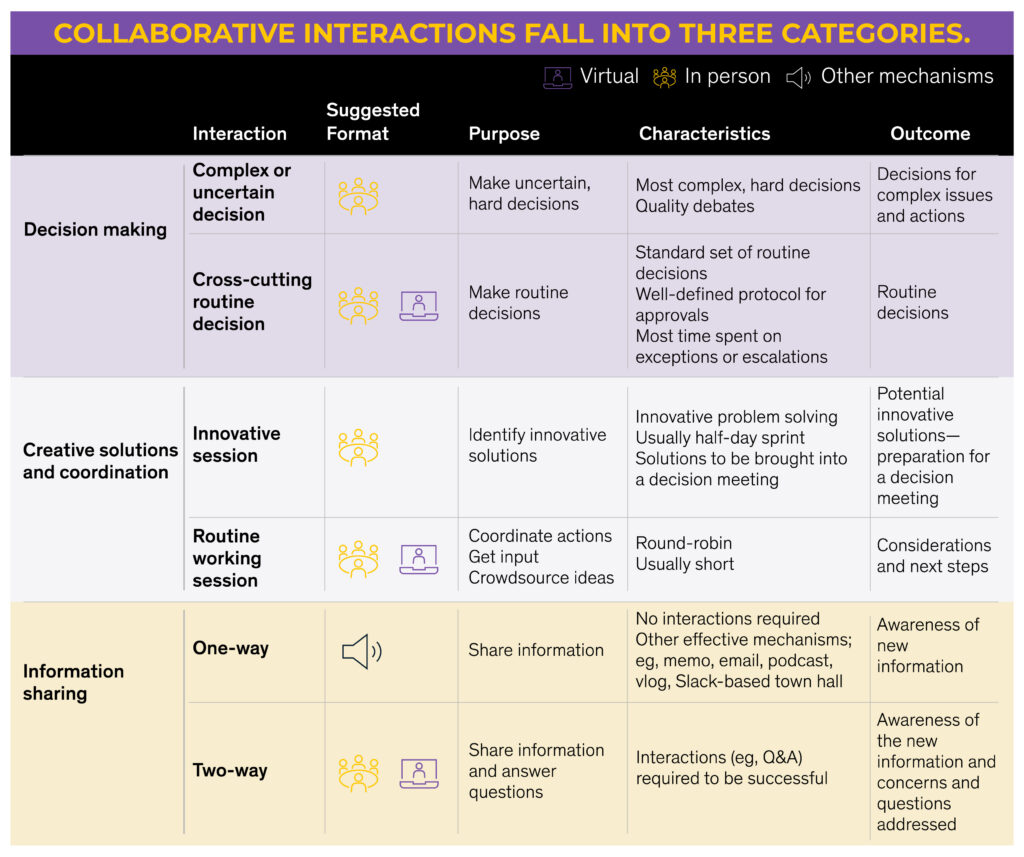Tightly focused interactions and decision-making can improve business performance, productivity, speed, and innovation within any organization, making it a critical growth lever
Each year, the winds of change that businesses face have accelerated. They’ve evolved into tornadoes. Companies today face five or more major changes per fiscal year, rather than just one, such as customer demands, market shifts, employee needs, and leadership. More often than not, they all occur at the same time, resulting in next level chaos.
Organizational leaders lose two things when there is chaos: confidence and strategic focus. Operating without confidence and focus is risky for any company, particularly those in volatile markets. Leaders and their teams frequently lose confidence in their decision-making abilities, resulting in operational inefficiencies, performance setbacks, and competing operational goals.
Psychologists have discovered systematic weaknesses in how people make decisions and process information; these new discoveries and theories are the foundation for this paper. These discoveries involve insights into errors that people make when they estimate risks and likelihoods, as well as biases in the way they seek information to improve their estimates. There are new theories about how easily our preferences can be influenced by the consequences we consider and the way we consider them.
Social psychologists have new information about how people divide the world into “us” and “them” that sheds new light on how discrimination operates. Interestingly, important new research into the dimensions along which people think that they are different from other people reveals why people might engage in practices that they would otherwise condemn in others.
While it may appear counterintuitive, a recent McKinsey study discovered a direct relationship between decision quality and decision speed. Respondents who said their organization’s decision-making was quick were 1.98 times more likely to say the decisions were also of high quality.
Many small and medium-sized businesses are shifting away from an IT-centric model and towards a people-centric model. The emphasis in people operations is on putting the employee first. This includes things like increasing engagement, retention, and involving your team in decision-making.
Successful collaboration skills employees can learn from this process include:
- Active listening (Listen to Understand)
- Analysing problems
- Delegating tasks (Individual Responsibilities)
- Brainstorming solutions to problems
- Being open to new ideas (Out-of-the-box thinking)
Types of Decision-Making
McKinsey research revealed that 80% of executives were considering or already implementing changes in meeting structures and cadence in response to the changed way of working, and a deluge of information and interactions.
Broadly speaking, these fall into the following 3 categories:

How can this be navigated for maximum efficiency? We propose a few simple shifts to help realise this.
Whose decision is it anyways?
One of the key factors when it comes to making quick, high-quality decisions is clearly identifying who makes the decision. Others might their inputs reflected, or be consulted, but the buck has to stop somewhere. Creating this hierarchy can result in greater clarity and speed when it comes to decision-making.
Embrace innovation
So often we get locked into the routine way of doing things, that we don’t pursue an innovative way of thinking or arriving at a solution. There might sometimes be an immediate need to “get it done”, contrarian thinking and empowering employees can boost engagement levels, particularly as an increasing amount of talent is looking for greater purpose.
Thoughtful empowerment
When we ask that you empower your employees, we don’t mean to leave them free to do as they please, or leave them be. There still needs to be a degree of guidance and involvement to ensure the ship is steered right, while being hands-off. Think of yourself as the team’s coach; you can offer the play book and break it down play by play, but the team still has to go out there and get it done when it counts. Ensure accountability, and step back to allow others to arrive upon a way forward.
Overcoming psychological barriers
Unless your team is psychologically confident, they won’t be able to safely (or speedily) take the decisions needed to overcome hurdles. Are your employees afraid to ask questions, or freely disagree? Do they feel a mistake will be held against them, and thus forced to hide risks and issues? Do they feel valued for their contributions and unique skillsets? If they don’t, introspect on why challenges like these lurk just out of view, and remedy it.
Simply put…
Allowing your employees to know that you value their input is a great way to boost company morale. Your entire organisation benefits when management involves their teams in decision-making similarly an involved employee is usually an engaged employee, but an engaged employee is not necessarily an involved employee. Essentially, employee engagement is the acceptance of the organisation’s goals, values, and overall vision, while employee involvement is the active implementation of such goals.


